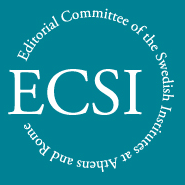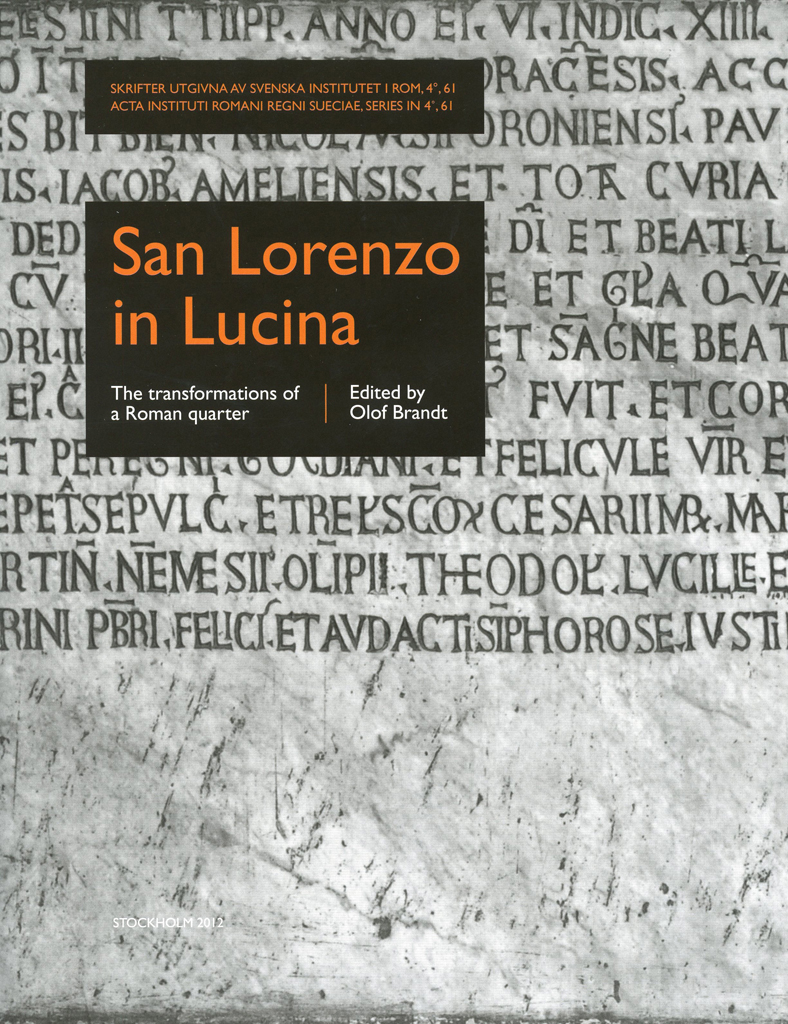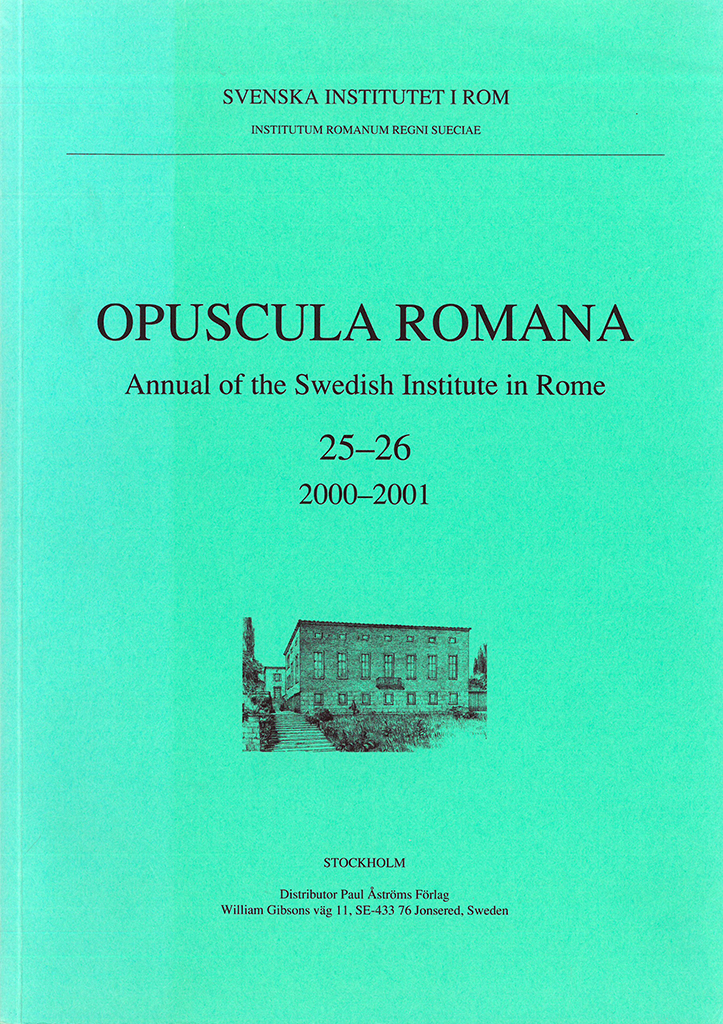Distributed by Eddy.se AB. Also available at Amazon.com, Amazon.de, Bokus.com, and Adlibris.com. San Lorenzo in Lucina. The transformations of a Roman quarter By Olof Brandt (ed.) This volume presents the results of research carried out by the Swedish Institute in Rome in the Roman church of San Lorenzo in Lucina. This research involved the Roman phases of the site and the surrounding quarter. The research began with the 1993–1998 excavation of the baptistery of the Early Christian church, and continued in 2000 with a project which also included other parts, aspects and periods of the site. The papers in this volume shed new light on the Late Roman and post-Antique development of an area which is between Augustan monuments such as the Ara Pacis, the Mausoleum of Augustus, the obelisk and its meridian. The papers include studies on the early 3rd century insula beneath the church, the baptistery and the Early Christian basilica, as well a survey of hagiographic legends, medieval wall-paintings, and other finds such as inscriptions and graffiti, pottery, glass, marble, bones and spolia. Reports on the conservation on fragments of Roman wall-paintings and marble fragments are also included. Contents Barbro Santillo Frizell | Preface Olof Brandt |…
Now available for purchase at Amazon.com, Amazon.de, Bokus.com, Adlibris.com, and Bokorder.se. Contents Johnny R. Bengtsson | Late Bronze Age handles from the Apennine settlement at Luni sul Mignone: Some chronological observations Ingela M.B. Wiman & Yvonne Backe-Forsberg | Surfacing deities in later Etruscan art and the sacellum at San Giovenale Allan Klynne | The Villa Selvasecca revisited John W. Hayes | Villa Selvasecca: the pottery finds Ebba Engström & Ragnar Hedlund | Villa Selvasecca: the coins Dominic Ingemark | Villa Selvasecca: the glass Anne-Marie Leander Touati | Interim report of the Swedish Pompeii Project: Work 2000–2004/5 in Insula V 1. Introduction Margareta Staub Gierow | The House of the Greek Epigrams V 1,18.11–12: preliminary report 2000–2004 Arja Karivieri & Renée Forsell | The House of Caecilius Iucundus, V 1,22–27: a preliminary report Henrik Boman & Monica Nilsson | The commercial establishments V 1,13; V 1, 14–16; V 1,20–21: preliminary report 2001–2004 Mark Robinson | Evidence for garden cultivation and the use of bedding-out plants in the peristyle garden of the House of the Greek Epigrams (V 1, 18i) at Pompeii Henrik Boman & Monica Nilsson | The early street and the prehistoric finds in Vicolo delle Nozze d’Argento, Pompeii Jörg…
Distributed by Astrom Editions. Contents Suzanne Dixon | How do you count them if they’re not there? New perspectives on Roman cloth production (pp. 7-17) Dominic Ingemark | Literacy in Roman Britain: the epigraphical evidence (pp. 19-30) Viktoria Laeben-Rosén | The importance of patricians as symbolic carriers of tradition in late-Antonine and Severan society (pp 31-44) Peter Liljenstolpe | Rustication and decor in Roman architecture: their reflection in the architecture of the 16th century with special attention to their use in the classical orders (pp. 45-72) Eva Minten | Roman children and their pets: a socio-iconographical survey (pp. 73-77) Mia-Maria Salomonsson | Roman legates in the Republic (pp. 79-88) Martin Söderlind | Romanization and the use of votive offerings in the eastern Ager Vulcentis (pp. 89-102) Örjan Wikander | Senators and equites VIII. The cognomina of new men in the Late Republic (pp. 103-108) Ingela M.B. Wiman & Sten Ekman | Man and nature in Etruria: natural resources management in the Massetano area (Tuscany, Italy) (pp. 109-124) Book reviews Ingela M.B. Wiman | L. Bonfante, Corpus Speculorum Etruscorum: USA 3. New York, Metropolitan Museum of Art (pp. 125-128) Martin Söderlind | J.W. Bouma, Religio Votiva: the archaeology of Latial votive…



